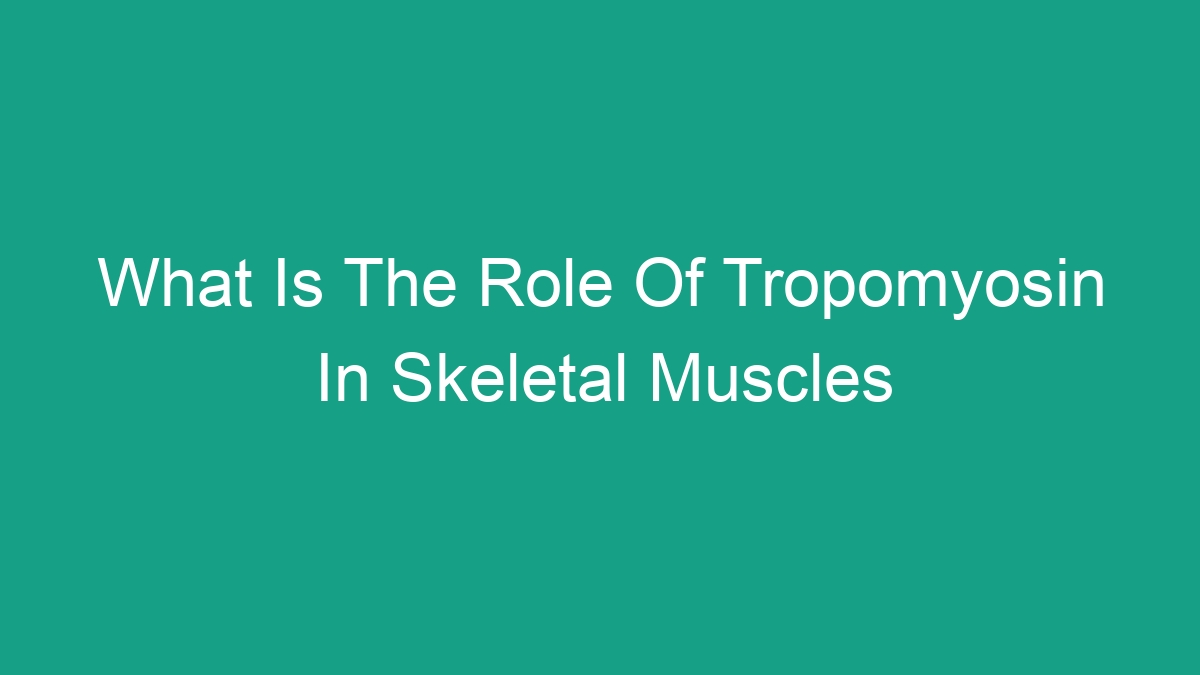
Skeletal muscles play a crucial role in the movement of the human body. Tropomyosin is one of the key regulatory proteins involved in the contraction and relaxation of skeletal muscles. In this article, we will explore the role of tropomyosin in skeletal muscles and its significance in muscle function.
What is Tropomyosin?
Tropomyosin is a long, fibrous protein that is involved in the regulation of muscle contraction. It is primarily found in association with the actin filaments in muscle cells, where it plays a crucial role in the process of muscle contraction and relaxation.
Tropomyosin is composed of a dimer of two parallel alpha-helical chains that run along the length of the actin filament. It is a highly dynamic protein that undergoes conformational changes in response to signals from other regulatory proteins, ultimately controlling the interaction of actin with another key protein, myosin, which drives muscle contraction.
Role of Tropomyosin in Muscle Contraction
The primary role of tropomyosin in skeletal muscles is to regulate the interaction between actin and myosin, which is essential for muscle contraction. When the muscle is at rest, tropomyosin blocks the binding sites on the actin filament, preventing myosin from attaching and forming cross-bridges. This prevents the muscle from contracting in the absence of a signaling stimulus.
When a signal to contract is received, calcium ions are released within the muscle cell, which initiates a series of events leading to the movement of tropomyosin and the exposure of the binding sites on the actin filament. This allows myosin to bind to actin, forming cross-bridges that generate the force needed for muscle contraction.
As long as the signaling stimulus persists, the myosin heads continue to interact with actin, causing the muscle to contract. Once the signaling stimulus is removed, tropomyosin returns to its resting position, blocking the binding sites on actin and allowing the muscle to relax.
Significance of Tropomyosin in Muscle Function
The precise regulation of muscle contraction and relaxation is crucial for the proper functioning of skeletal muscles. Tropomyosin plays a key role in this regulation, ensuring that muscle contraction only occurs in response to the appropriate signaling stimuli, and that the muscle relaxes when the stimulus is removed.
Some key points to note about the significance of tropomyosin in muscle function include:
- Tropomyosin ensures that muscle contraction is tightly regulated, preventing unnecessary or prolonged contractions that could lead to muscle fatigue or injury.
- It allows for fine control of muscle movement, enabling precise coordination of muscle contractions in response to varying demands placed on the musculoskeletal system.
- By regulating the interaction between actin and myosin, tropomyosin contributes to the overall efficiency of muscle contraction, optimizing the use of energy and resources within the muscle cell.
- Defects or dysregulation of tropomyosin function can lead to muscle disorders and conditions such as muscle weakness, atrophy, or impaired movement.
Conclusion
Tropomyosin is a critical regulatory protein in skeletal muscles, playing a central role in the process of muscle contraction and relaxation. Its dynamic interaction with actin and myosin ensures that muscle function is tightly regulated and responsive to signaling stimuli, allowing for precise and efficient movement of the human body.
Understanding the role of tropomyosin in skeletal muscles provides valuable insights into the mechanisms underlying muscle function and the potential implications of tropomyosin-related disorders. Further research into the structure and function of tropomyosin may uncover new strategies for the treatment of muscle-related conditions and the development of therapies aimed at optimizing muscle performance.




